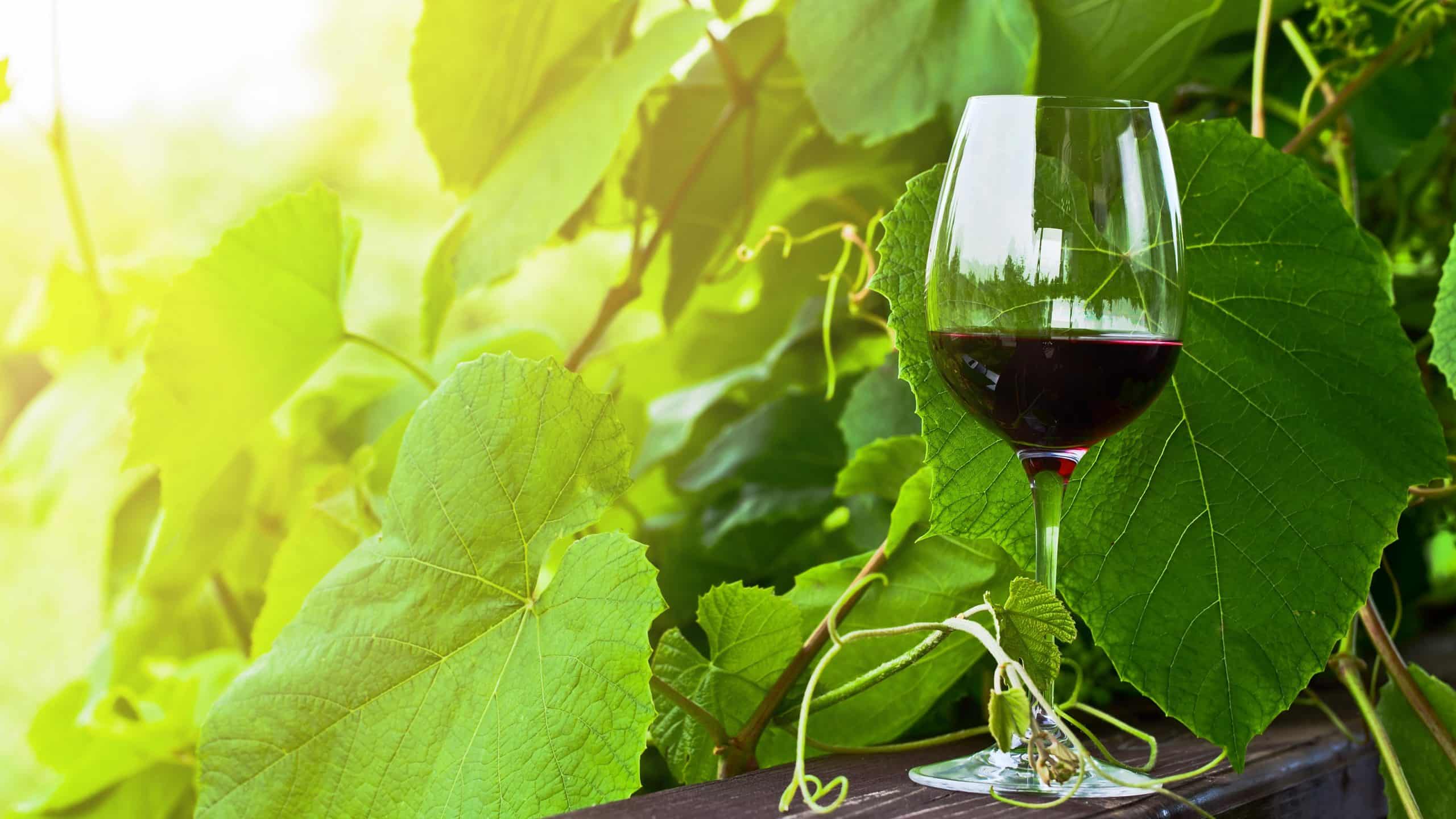The appreciation of the taste of the wines is based on our senses. It is said that we must use everything that Nature has endowed us: sight (we look at the color), touch (we rotate the glass, to feel the richness, the full-bodiedness), hearing (we bump the glass), the smell (we sniff the flavors, the bouquet) and taste (the most complex). For taste we have at least four options: sweet, bitter, sour, salty and more recently discovered umami sensation (savor). When we taste a wine with the rest of the sugars it is normal to feel pregnant, the sweet taste. In the case of dry wines, the sensation of sweet that appears to us at the first sip is due to other volatile compounds.. They come either from grapes, or from the yeast activity or from the contact of wine with oak wood during ripening.
The most well-known nonvolatile compound that seems to be responsible for its sweet taste is glycerol. Along with glycerol other compounds have recently been discovered: astilbineandstereoisomers and its stereoisomers . The latter can give different sensory notes, even if their chemical formula does not change radically. These stereoisomers have already been observed in medicinal plants ( Hypericum perforatum) or in decorative flowers (False goat’s beard-Astilbe japonica)), but never before, in wine. [7]
Most specialists put the sweet taste of dry wines, on account of the presence of glycerol, especially in red wines that already have the perfect malolactic fermentation. desavarsita. Sunt specialisti care sustin ca un continut de glicerol mai mare se gaseste in vinurile obtinute din struguri atacati de putregaiul nobil, fiindca strugurii ar contine deja cateva grame de glicerol pe kilogram, care se vor adauga la glicerolul produs prin fermentatie.[2] Aceasta convingere nu poate fi in concordanta cu realitatea, fiindca glycerol is a fermentation product,, more precisely glycero-pyruvial fermentation.The sweetness of the natural sweet wines is given by the residual sugar content, not by glycerol.
Glycerol is not detectable in tasting, so we cannot appreciate its presence against a particular reference. In small quantities it is not toxic, but ingested in large quantities has a strong laxative effect (diuretic, purgative). Products that contain glycerol or its compounds should not be left out of reach of children, being proven many tragic cases as a result of severe intoxication with antifreeze (which has in its composition synthetic glycerol ). The DL50 is over 4000 mg/kg body weight in case of swallowing and over 5000 mg/kg body weight in case of glycerol inhalation (data from mammal/small animal tests).[ 8]
The taste of glycerol is associated with the tactile sensation of unctuousness, present both in the "glycated" wines and in the medicines in which it was added in order to attenuate the bitter taste or for a better lubrication of the active ingredients. In cosmetics, synthesis glycerol is used for its lubricating properties (glycerin), but especially because it is a good solvent and moisturizer. [4]
If we consider only these two properties: good solvent and moisturizer, we explain why red wine is suitable alongside fat foods and does not cause the same dehydration reactions that some of us notice when consuming white or rose wines, which are not so rich in glycerol, but more sulfity than red wines. Natural sweet wines, those that are obtained from overripe or botritized grapes (attacked by noble rot) also have a high content of glycerol, but we do not feel it gustatory, being "covered" by residual sugar. Therefore, even if, in order to be kept for a longer time, sweet white wines have a higher content of sulfites, the feeling of dehydration does not appear after their consumption, because glycerol exerts its moisturizing role. (
Glycerol is formed during alcoholic fermentation, when in the must of black grapes, glycero-pyruvica fermentation takes place. The formation of a higher amount of glycerol in red wine is the result of thermal treatment of the harvest, the use of heat in rotating tanks or under the "floating cap" or the control of fermentation exothermal reaction)that can reach temperatures above 22 degrees Celsius by itself. In "orange" wines (white wines with maceration) we can find a larger amount of glycerol, precisely because of the temperature control during the fermentation of white grape must, through the technology used to obtain red wines. Glycerol is a byproduct of reactions to convert glucose or other easily fermentable sugars into ethanol. That is why we find it in sweet wines naturally, regardless of the color of the grapes, because the production of glycerol is more accentuated during the fermentation of musts with higher alcoholic potential, not because it would be a component of botritized grapes.
But, how much glycerol should be in red wine, so that we feel it semi-dry or even semi-sweet, when physico-chemical analyzes recommend it to us as a dry wine?
Many tend to blame the corpolenta glycerol (the body of the wine), precisely because of its quality of giving viscosity and unctuousness. In reality, the body is given by the content of sugars, alcohol and dry extract (polyphenols, tannins, etc.). However, in wines with high concentrations of glycerol , a certain softness remains, which is why some winemakers may find it tempting to add this additive to the harsher wines, to make them much faster ready for consumption or to "skip" the maturation period in the wooden barrel. The fraudulent addition of glycerol to chemical synthesis is easily detected, however, by highlighting in the wine some impurities, which accompany the synthetic glycerol solutions. Also, as a fermentation product, glycerol must be in harmony with other components resulting from identical precursors. [1]
Glycerol has a sweet taste, its sweetener power being 50-60, on a scale where sugar is 100. There are researches that have shown that the proportion of glycerol in an authentic wine can be between 6-12% of the quantity of ethanol resulting from fermentation. The glycerol content of the wines is between 4-5 g/l and 15-20 g/l, depending on the fermentation conditions. An important factor is the degree of sulphitation of the wort before fermentation. [4]
Being a good solvent, glycerol better preserves the flavors in food products, and its name as a food additive is E422, being added as an emulsifier and humectant. There is no legislatively regulated maximum dose of glycerol , but the compound is included on the FEMA-GRAS list. [5]
The more we know about the composition of wines, the more curious we are. The research continues, regarding the non-volatile compounds with a role in the harmony of taste. Will the technology of winemaking , which is becoming more and more present, be able to preserve all these qualities that we have become accustomed to find in this cultural product, which is wine?
Sources:
- SCORBANOV, Elena; DEGTEARI, Natalia; RANDA, Parascovia; TAMPEI, Olga – Identification of extract correction and organoleptic properties of wine by adding synthesis, Institute of Horticulture and Food Technologies, no. 5-6 [65-66] „Pomicultura, Viticultura si Vinificatia” pg. 51 – 59, 2016
- https://www.rewine.ro/blog/vinuri-dulci-bune/
- https://ro.frwiki.wiki/wiki/Glyc%C3%A9rol
- https://www.rasfoiesc.com/educatie/chimie/GLICEROL-LUCRURI-VECHI-SI-NOI-17.php
- https://www.femaflavor.org/fema-gras
- https://www.infowine.com/en/infowine_premium/understanding_sweetness_of_dry_wines_first_evidence_of_astilbin_isomers_in_red_wines_sc_19658.htm?utm_source=infowine-en&utm_medium=bollettino&utm_campaign=WebinarChairDenisDubourdieu
- https://www.sciencedirect.com/science/article/pii/S1043661820312020
- https://ro.wikipedia.org/wiki/Doz%C4%83_letal%C4%83






